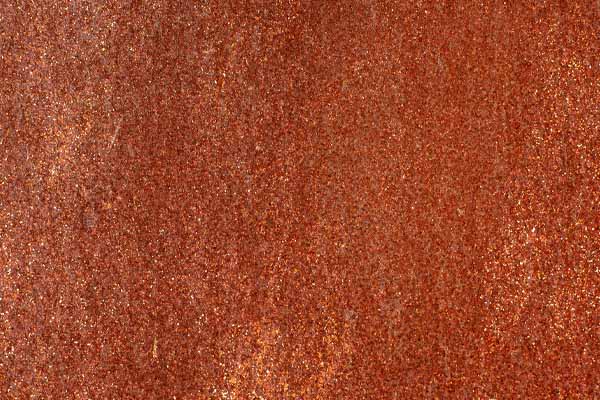Contents
- What You Need To Know About Oil Tank Condensation
- Contact Taylor Energy for Top-Tier Home Comfort Solutions
Oil-powered heating systems depend on fuel oil tanks for storage and safety of the fuel. While this setup generally functions effectively, there are instances where it falls short of ideal. One such issue is water infiltration into the heating oil tank, leading to challenges like oil tank condensation. Although this is a common occurrence, it’s important to note that it can be avoided.
What You Need To Know About Oil Tank Condensation
Continue reading to better understand oil tank condensation, including effective prevention strategies.

How and Why Water Gets Into Your Home Oil Tank
Water, omnipresent in the environment, can assume various forms and gradually make its way into your oil tank. Uncovering the routes through which water enters the tank helps you be better equipped to prevent future incidents.
Rainwater
Outdoor placement of your tank subjects it to rainwater exposure. Water’s ability to penetrate even the smallest spaces and gaps, such as ill-fitting caps and lids, makes it a persistent challenge. Tanks positioned near buildings can also be vulnerable to water from overflowing gutters. Additionally, older oil tanks are often at risk due to weakened areas like deteriorated seals and fractures in the tank walls.
Condensation

Irrespective of the tank’s location, condensation poses an ongoing risk. Air vents, acting as entry points, can draw in moist external air. When the tank’s internal temperature drops sufficiently, this moisture can condense, transitioning from vapor to liquid. This may lead to droplet formation on the tank’s inner walls, which may gradually accumulate at the bottom. Although a small amount of water might not seem problematic initially, condensation can progressively worsen without appropriate measures.
Groundwater
In the case of underground oil tanks, the risk of water entry through holes or cracks around the tank is a significant concern. This issue is particularly problematic, not only because of water seeping in but also due to the potential for oil leakage, leading to soil contamination. Any damage to underground tanks necessitates immediate attention from professionals.
What Happens If Water Gets into My Heating Oil Tank?
Oil’s lower density than water makes detecting water in tanks, especially underground ones, difficult until noticeable damage occurs.
Preventive actions, like regular maintenance and using a water-finding paste on the tank’s bottom, are crucial. The paste changes color if moisture is present, and professional help is needed for significant water detection.
Strategies for Preventing Condensation in Heating Oil Tanks

With an understanding of the potential issues, it’s essential to concentrate on preventing further water ingress into the oil tank. Here are several straightforward methods that can be effectively employed:
Regular Inspection of the Fuel Oil Tank
Incorporate regular inspections of the tank’s exterior into your routine. Look out for any indications of damage, including rust, flaking paint, and holes or perforations. Ensure that all caps and lids are securely closed and properly tightened.
Testing for Water Presence
Since visual inspections may not reveal all potential issues, it’s crucial to test for water presence periodically. Employ a water-finding paste, adhering to the manufacturer’s recommendations, or after consulting with a heating oil expert, and apply it to the lower sections of the tank. For underground tanks, conducting soil contamination tests is an effective approach.
Shielding the Heating Oil Tank from Heat
Positioning new tanks in shaded areas and applying reflective, light-colored paint on the tank’s exterior can significantly protect them from heat. This approach helps reduce condensation from substantial temperature variations around the tank.
Maintaining a Full Home Oil Tank
Preventing the fuel level in your oil tank from dropping too low is vital in minimizing moisture ingress and reducing the likelihood of condensation. Schedule oil deliveries before the levels become critically low. Ensure the tank remains full during the heating season and off-season.
Call for Professional Services
Professionals can thoroughly inspect your heating oil tank and recommend replacements for older tanks when needed. Additionally, their expertise extends to advising on optimal tank placement, ensuring longevity and efficiency.
How Professionals Remove Water From Your Oil Tank
Upon confirming the presence of water through a moisture test, it’s essential to address the issue promptly. This task should always be entrusted to a professional. Here’s an overview of the steps they might undertake, tailored to the specific circumstances of the tank:
Draining
Metal tanks are often equipped with a sludge valve at the bottom. A professional can utilize this valve to drain water from the tank. Some oil might also be expelled during this process. Professionals can collect and dispose of this mixture in a safe and environmentally responsible manner.
Pump
Plastic tanks typically lack a sludge valve, but a hand pump can effectively extract small amounts of water. However, this method might not suffice for larger volumes of water, so seek the assistance of professionals.
Absorb
Another method a professional may employ is using water-absorbent socks within the tank. These socks are designed to absorb moisture, preventing it from accumulating at the bottom. However, they require regular replacement, typically every few months, and the used ones must be disposed of properly. Professionals might also opt to use an alcohol-based dispersant.
Consequences of Neglecting Water Removal from Your Oil Tank

Rusting
Disregarding water presence in oil tanks as a harmless issue can lead to significant damage over time. One of the primary concerns is the corrosion of the tank’s internal walls. Most steel heating oil tanks tend to rust from the inside out, meaning the exterior may appear intact while the interior deteriorates. This process weakens the tank’s structure, potentially leading to future complications. Furthermore, such corrosion adversely affects the system’s efficiency and performance.
Freezing
While heating oil has a low freezing point, making it generally resilient in cold conditions, water within the tank is not as forgiving. It freezes at 0 degrees Celsius (32 degrees Fahrenheit), a temperature frequently encountered in many regions. When the water in the tank freezes, it can obstruct the oil supply pipes, potentially causing a total system breakdown — often at the most inopportune times, like during peak heating demand.
Bacterial Growth
Moist conditions within oil tanks create an ideal environment for bacterial growth. These microorganisms can flourish in such settings, eventually forming sludge at the base of the tank. They can produce acids that accelerate corrosion, affecting the tank and damaging burners, filters, and fuel lines. This progression can result in significant operational problems.
Conclusion
Water has no place in an oil tank. To avert potential damage to the tank and subsequent issues with the heating system, diligent efforts must be made to keep water out. Following the preventive steps outlined in this article and seeking assistance from professionals for more complex scenarios can ensure the longevity and efficiency of your oil tank.
Contact Taylor Energy for Top-Tier Home Comfort Solutions
For unparalleled oil delivery service, trust Taylor Energy. As one of the leading providers in the region, our commitment to timely and reliable deliveries ensures that you’re never left in the cold. Our skilled team understands the importance of timely fuel deliveries, which is why we offer a range of customizable delivery plans and flexible financing options tailored to suit your specific needs. Rest assured, when you choose Taylor Energy, you’re choosing quality, punctuality, and affordability. Discover more about our vast delivery network by contacting us today!
Every delivery from Taylor Energy comes with our steadfast guarantee. Our service isn’t just about delivering oil; it’s about ensuring your home remains warm and your peace of mind is intact. When it’s time to refill, don’t settle for less. Ensure seamless, hassle-free service with Taylor Energy. Schedule your next delivery with us today and experience the Taylor Energy difference. For a free consultation or to get an estimate, reach out to Taylor Energy now.
You can click here to contact us now or call us at (860) 623-3308 to find out more! Click the link to view our service area.

Related Articles:
